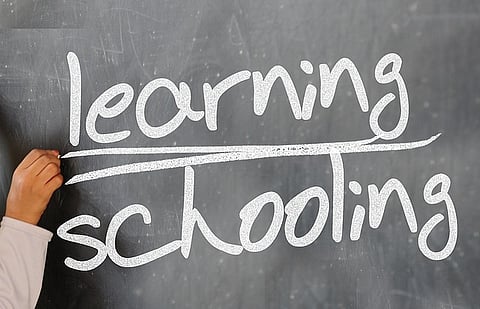

Schools are finding it increasingly difficult to keep children’s attention. Some studies have reported a 42% increase in Attention Deficit Hyperactivity Disorder in less than a decade.
There are two dominant approaches to young people’s declining attention spans. The first is to say that: “It’s just the modern generation and they will have to adapt”. The second involves medicating children in a bid to make them more compliant and to improve their concentration.
The first approach is an ostrich mentality and will not solve the problem. The second approach is increasingly being rejected as addressing the symptom rather than the problem.
There’s a third possible approach: adopting new methods of teaching and learning. This opens up a host of opportunities, led nowadays by digital solutions. But even these apparently progressive solutions are far from foolproof.
So what if we combined elements of the second and third approaches - chemical and technical? And what if those chemicals were created by our own bodies rather than produced in laboratories?
Dopamine is a chemical that functions as a neurotransmitter. When behaviour is rewarded, the level of dopamine in the brain increases. For instance, new information creates a rush of dopamine to the brain.
That means every time you read your email, scour the web or read social media posts (unless they’re written by trolls), you are getting bursts of dopamine. These mini-highs compel your brain to ask for more dopamine – so you go looking for more new information.
A study has found that dopamine deficient mice showed no evidence of learning on a task they were set. Their counterparts who had enough dopamine in their systems showed evidence of learning on the same task. The researchers concluded that the:
… lack of dopamine results in a performance/motivational decrement that masks their learning competence.
There are many ways in which technology can be used to motivate learning through dopamine production: the use of games (or gamification), social media or the creation of digital content.
Anyone who has played video games knows that the best games feature levels, challenges and rewards along the way. Gamification uses these elements, building small reward cycles that get learners hooked into the experience of acquiring new knowledge.
No, you’re not just wasting time when you play a game - you’re learning, too
One of the most common myths about dopamine is that our brains only produce it when we’re rewarded for our actions – like getting a badge for completing something. Actually, dopamine is released when we are set a challenge and conquer it.
The result is that we seek another challenge so we can have more achievement – and ultimately more pleasure (dopamine). It’s not simply completing a game that attracts a gamer, but rather the cycle of getting through increasingly difficult levels. The same applies to learning. Most modern education focuses on the reward, the mark, rather than on encouraging learners to tackle new challenges with knowledge as the reward.
First comes challenge, then comes achievement – then comes pleasure and a sweet rush of dopamine.
There are two essential elements in motivating students to learn in our modern technological age. The first involves creating smaller learning tasks, just like games. These small units may all build towards a final scenario, or provide clues or parts of a story. As students crack the code, their dopamine spikes and they want to learn more.
The second involves curiosity. Research has found that curiosity increases the production of dopamine, which in turn strengthens people’s memories. Students who were curious were not only better at remembering answers to trivia questions but also exhibited improved memory on unrelated information.
One of the researchers, neuroscientist Charan Ranganath, told an interviewer:
When we compare trials where people are highly curious to know an answer with trials where they are not, and look at the differences in brain activity, it beautifully follows the pathways in the brain that are involved in transmitting dopamine signals. The activity ramps up and the amount it ramps up is highly correlated with how curious they are.
This research suggests that a combination of novel activities, with smaller tasks, that potentially weave together to unlock stories, or levels, or further information will be highly motivating for learners.
Craig Blewett is Senior Lecturer in Education & Technology at University of KwaZulu-Natal.
This article was originally published on The Conversation. Read the original article.